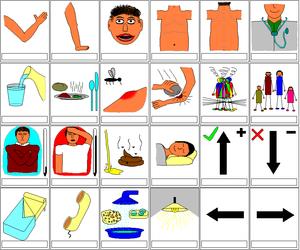Nonverbal communication is the process of communication through sending and receiving wordless (mostly visual) cues between people. It is sometimes mistakenly referred to as body language (kinesics), but nonverbal communication encompasses much more, such as use of voice (paralanguage), touch (haptics), distance (proxemics), and physical environments/appearance. Typically overlooked in nonverbal communication are proxemics, or the informal space around the body and chronemics: the use of time. Not only considered eye contact, oculesics comprises the actions of looking while talking and listening, frequency of glances, patterns of fixation, pupil dilation, and blink rate. This subject is diverse in meaning, relative to culture and not limited to these definitions specifically.Even speech contains nonverbal elements known as paralanguage, including voice quality, rate, pitch, volume, and speaking style, as well as prosodic features such as rhythm, intonation, and stress. Likewise, written texts have nonverbal elements such as handwriting style, spatial arrangement of words, or the physical layout of a page. However, much of the study of nonverbal communication has focused on interaction between individuals, where it can be classified into three principal areas: environmental conditions where communication takes place, physical characteristics of the communicators, and behaviors of communicators during interaction.Nonverbal communication involves the processes of encoding and decoding. Encoding is the act of generating the information such as facial expressions, gestures, and postures. Decoding is the interpretation of information from received sensations from previous experiences.Only a small percentage of the brain processes verbal communication. As infants, nonverbal communication is learned from social-emotional communication, making the face rather than words the major organ of communication. As children become verbal communicators, they begin to look at facial expressions, vocal tones, and other nonverbal elements more subconsciously.Culture plays an important role in nonverbal communication, and it is one aspect that helps to influence how learning activities are organized. In many Indigenous American Communities, for example, there is often an emphasis on nonverbal communication, which acts as a valued means by which children learn. In this sense, learning is not dependent on verbal communication; rather, it is nonverbal communication which serves as a primary means of not only organizing interpersonal interactions, but conveying cultural values, and children learn how to participate in this system from a young age.




Comment
0